Ketford Borehole Pumping Station (2020)
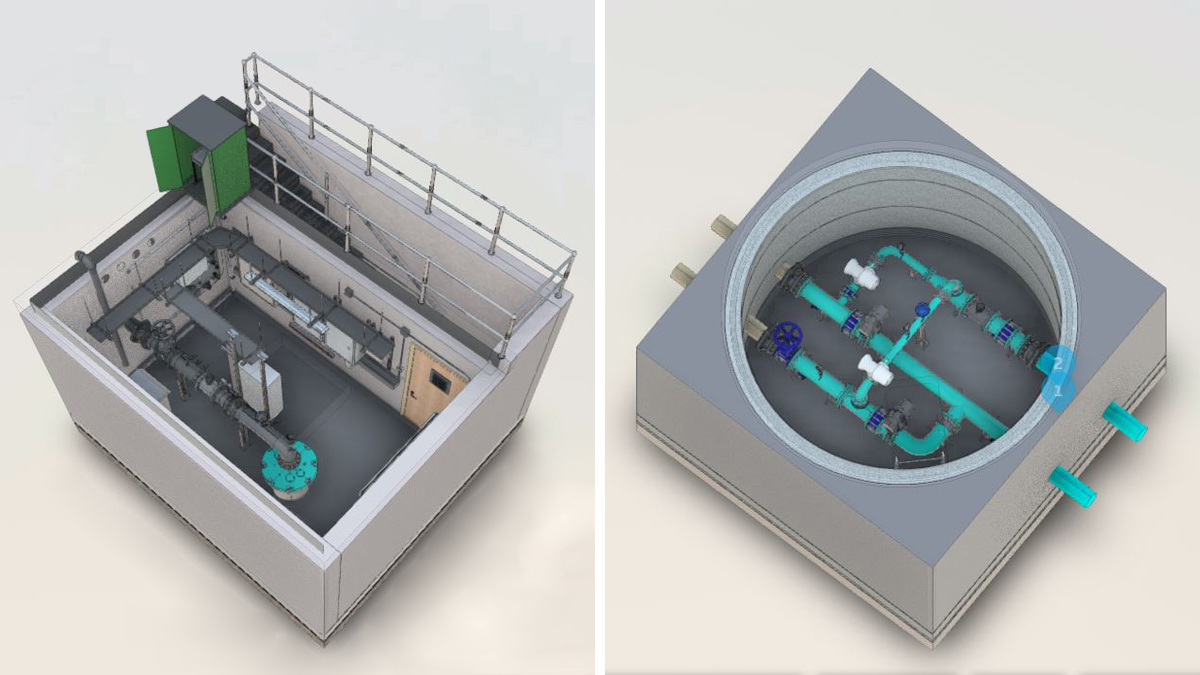
(left) 3D render of Borehole 4 chamber and (right) 3D render of the combined flow chamber - Courtesy of Galliford Try
Severn Trent’s Ketford Borehole Pumping Station (BPS) is a critical source which feeds into the Bromsberrow BPS, where the water is blended before being pumped into supply. The pumping station was vulnerable to outage largely due to having a single operational borehole. There were three boreholes at the site (BH1, BH2 and BH3), which historically operated in a duty/assist/standby configuration, however Boreholes 1 & 2 had been out of service since 2012 due to water quality concerns including bacteriological detections, elevated turbidity on start-up and elevated salinity, leaving BH3 as the single duty borehole.
Background
Boreholes 1 & 2, the original boreholes at the site, had exceeded their generic asset life of 80 years having been drilled in 1911 and 1914 respectively. BH1 was pitted and had poorly grouted plain casing and heavily encrusted perforated casing and had been graded 5 (‘very poor’) based on a 2012 CCTV downhole survey. Although BH2 had not been surveyed since 1994, its condition was expected to be similar to, or worse than that of BH1. BH3 was drilled in 1993 and the condition was considered to be satisfactory.
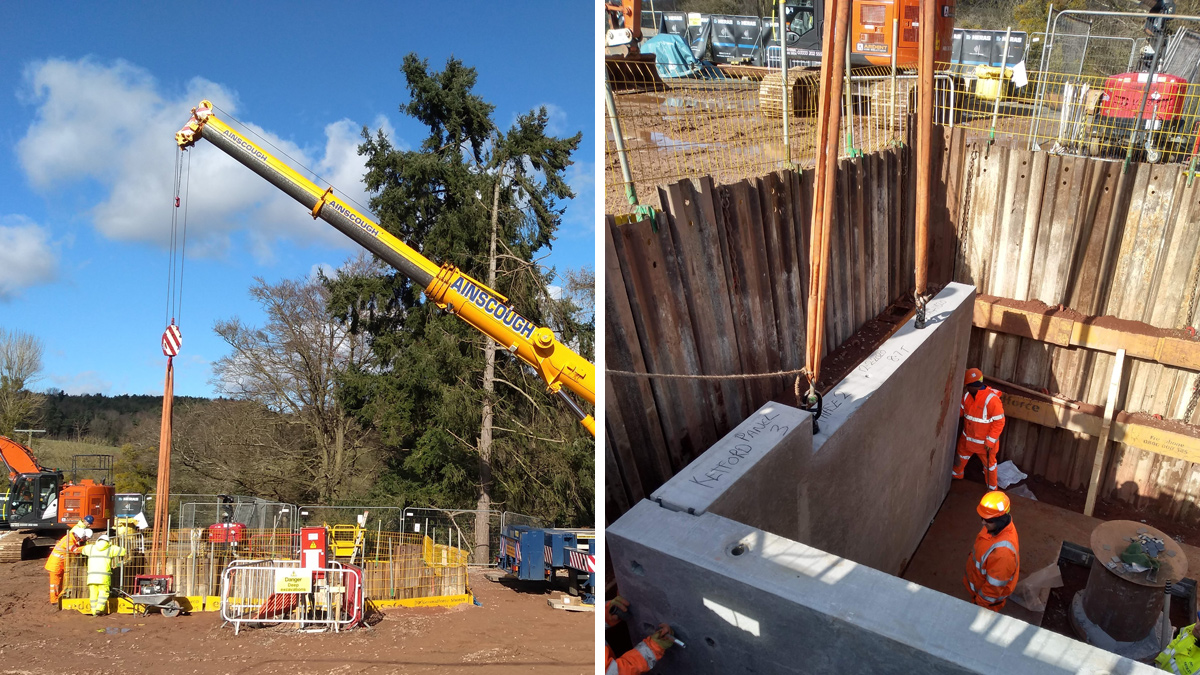
Borehole 4 chamber installation – Courtesy of Galliford Try
Ketford Borehole Pumping Station: Supply chain – key participants
- Project Delivery, civil, mechanical & electrical design: Galliford Try
- Electrical design: Boulting Group
- Drilling contractor: Marriott Drilling
- Control panels: MCS Control Systems
- Precast concrete: Marshalls CPM
- Civils contractor: Arthur Civil Engineering
- Borehole pumps: Flowserve
- Boll filters: Bollfilter UK Ltd
- Kiosks: NPS Group
Scope
The agreed solution was to backfill BH1 and BH2, taking care to seal off the saline horizons, and drill two new boreholes on the same aquifer (BH4 and BH5). These were to be located far enough from BH3 to avoid any adverse effects. Land was acquired to allow the two new boreholes to be drilled. This would restore the original operating configuration of duty/assist/standby.
A new duty/standby Boll filtration unit was to be installed at Bromsberrow on the incoming Ketford main pipework to remove any excess sand produced during the borehole construction process and to avoid turbidity issues on borehole start-up.
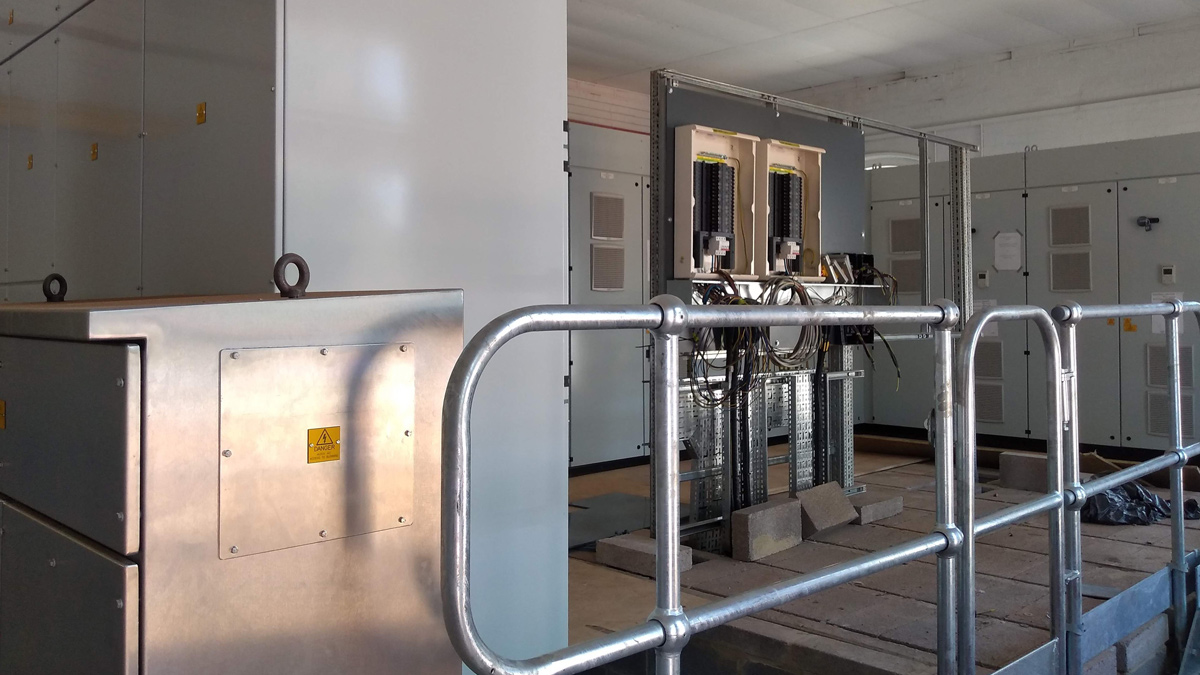
New intelligent MCC and MCC upstand – Courtesy of Galliford Try
The switchgear and motor control centre at Ketford had also reached end of asset life and needed renewal. The whole site was to be refurbished with a new transformer and a new MCC incorporating three new VSDs (variable speed drives). The existing BT private line was to be replaced by new site to site communication between Bromsberrow BPS and Ketford BPS. This would allow control of the Ketford BPS from Bromsberrow and allow the correct duty configuration to be selected, providing correct blending to the reservoir.
Security in the building also required improvement to secure the critical process from outside interference. Some unused/unsafe extension buildings are to be demolished and security doors installed throughout.
Key aspects
Key aspects of the projects included:
Raised brick flooring to support the new MCC: This was proposed as an alternative to suspended mezzanine flooring to avoid excavating close to foundations in the existing building which dates back over 100 years. A 3D model was created to match the new MCC footprint and cable access via the existing building troughs.
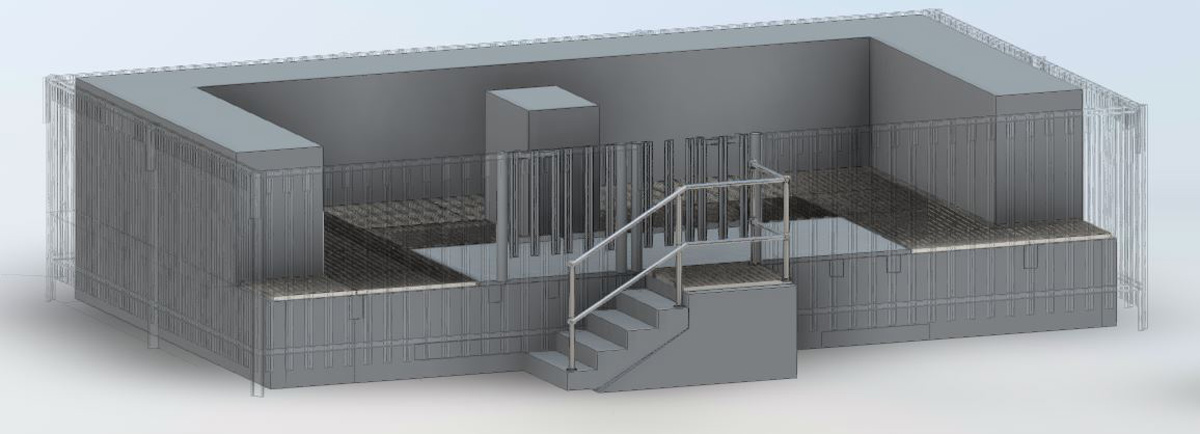
3D render of MCC upstand – Courtesy of Galliford Try
Underground borehole chambers (BH4/BH5): These were designed to house the new borehole headworks and all instrumentation required. To improve the program and decrease the extent of the excavation required to house a 5.6m x 2.8m concrete chamber, the two identical borehole chambers were designed by Galliford Try, precast by Marshalls CPM and installed in 3 day period on site per chamber.
Smarter control centre using an intelligent MCC: The existing hardwired MCC was replaced by an intelligent ethernet MCC with remote input output local control panels to each borehole (RIO panels). Each headworks has been designed to incorporate standardised design to allow borehole valve control to divert to washout automatically should high turbidity be detected.
Temporary caustic dosing system: This was built as an enabler to maintain pH levels within PCV at Bromsberrow without the blending flow from Ketford. This allowed Ketford BPS to be switched off for a year, allowing the safe backfilling of the two existing boreholes (BH1 and BH2) and drilling of the new borehole (BH4 and BH5) without drawing impurities via a running borehole (BH3).
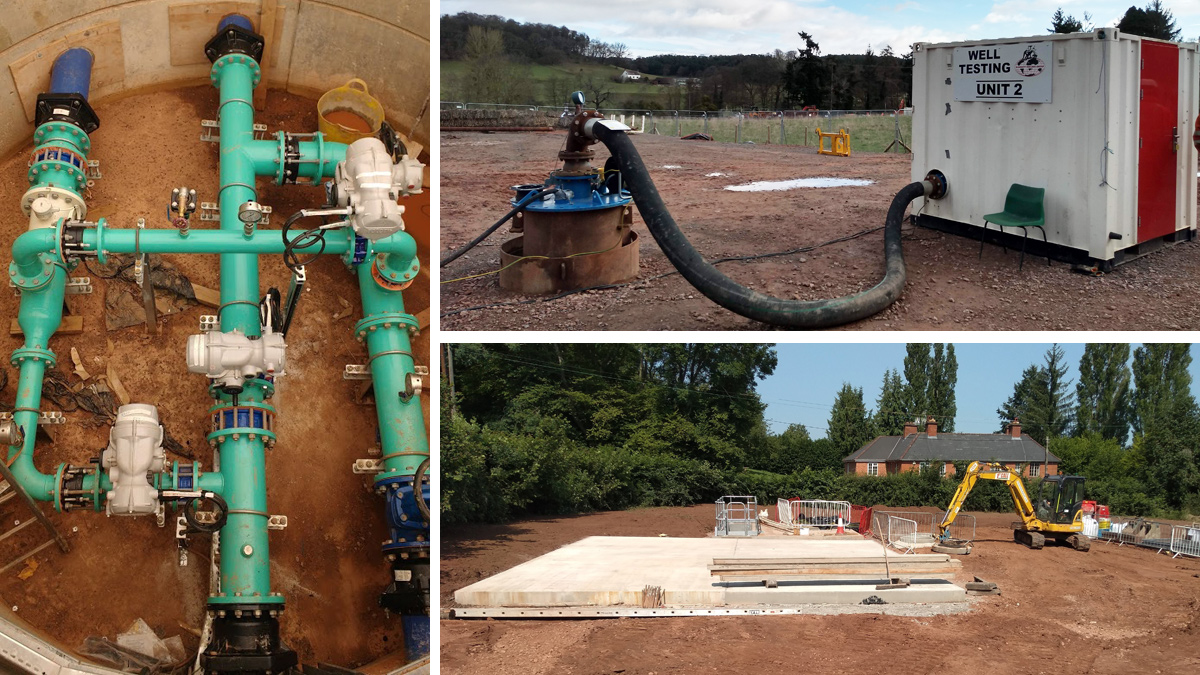
(left) combined flow chamber, (top right) Borehole 5 CRT test and (bottom right) Borehole 5 chamber – Courtesy of Galliford Try
Challenges
As Ketford BPS is located in a very rural location there were challenges around the appearance of the headworks for the two new boreholes. Severn Trent’s standard approach would be to build the new borehole headworks above ground to allow easier access and reduce risk of surface water ingress into the boreholes. The visual impact of the proposed kiosks was assessed by erecting temporary wooden mock-ups and following this trial it was decided to put the headworks below ground in concrete chambers. The chambers are sealed against water ingress and sump pumps are provided as an additional control measure. A staircase provides safe access.
Access to site is via single narrow lanes, requiring traffic management to minimise the impact of deliveries to site and avoid conflict with local traffic.
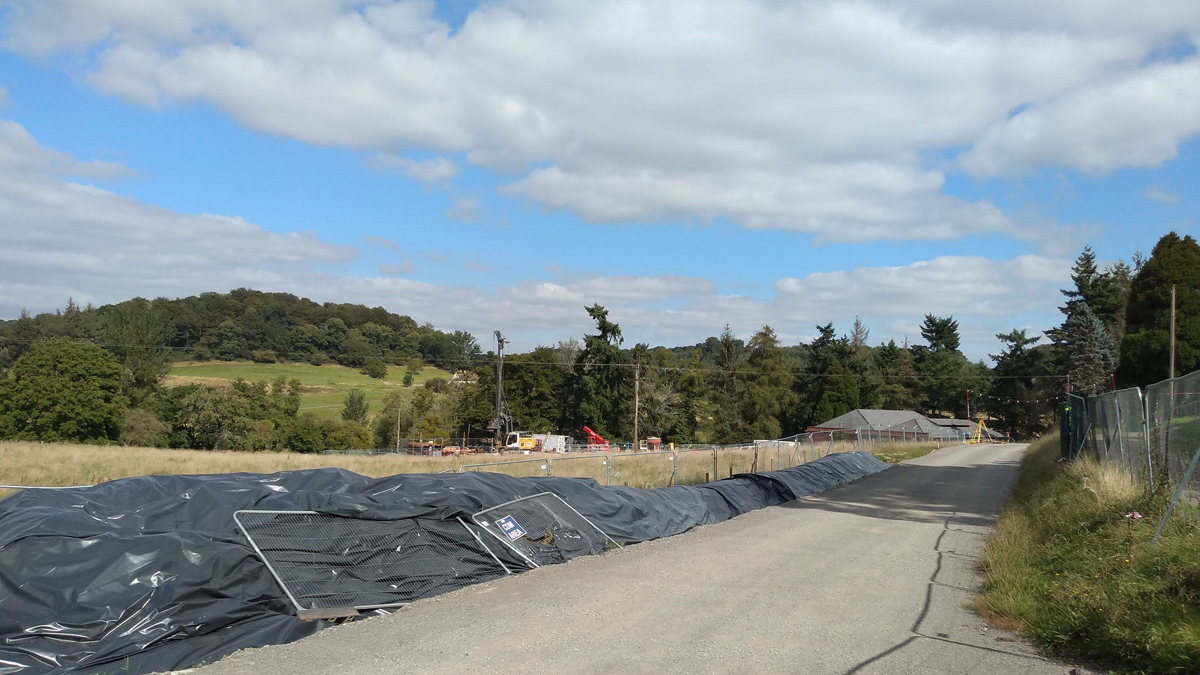
Temporary haul road – Courtesy of Galliford Try
As part of the control philosophy review, Galliford Try created Ketford as a remote site but allowing remote resetting of the site from Bromsberrow BPS. The two HMI’s at Ketford and Bromsberrow are also mirrored, hence giving visibility of Bromsberrow from Ketford. This approach avoids the need for operators to travel between the sites to reset faults – a particular advantage as the narrow lanes are prone to flooding.
The existing site access track includes several hairpin bends. To allow crane and drilling rig access, a temporary haul road was created by hiring part of the adjacent field. This will be reinstated once final crane pads have been installed in July.
Current status (July 2020)
The two new boreholes have been successfully drilled to a depth of 100m and underground chambers have been installed. One borehole has been tested via a constant rate test, where borehole production is proven over uninterrupted pumping and testing over 28 days. BH4 is being tested at present. Early test results indicate that water quality is good and that the target output will be achieved. Once both boreholes have been tested, a report will be produced for the DWI and abstraction licenses requested from the EA to allow both the new boreholes to go into supply to Bromsberrow, providing the resilience required for safe water production.
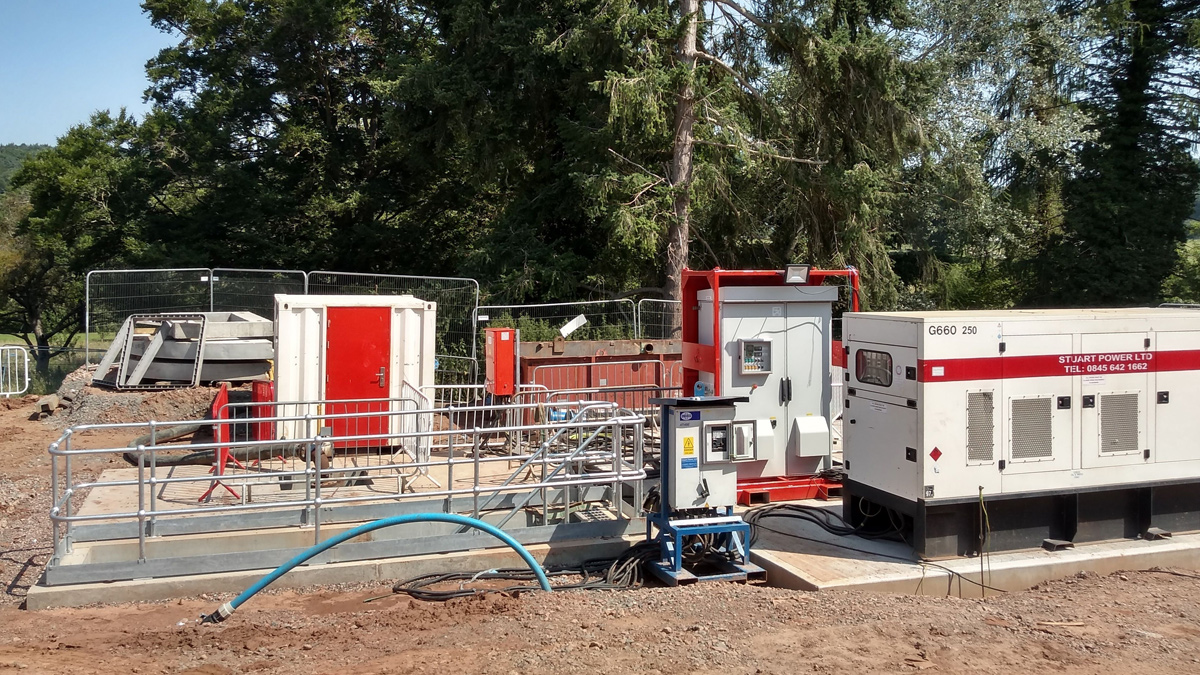
BH4 chamber CRT testing – Courtesy of Galliford Try
The new MCC has been installed, and the old one will be removed once the constant rate test has been completed. Drilling and testing work should be completed by mid-August 2020, allowing BH3 to go back into supply.
The 3.9km main between Ketford and Bromsberrow will be flushed and chlorinated to resume normal control of BH3 into Bromsberrow. Once resumed, the temporary pH Dosing at Bromsberrow will be turned off. Later, when both new Borehole licenses have been approved, they will be included in the automated duty process selection located at Bromsberrow.






